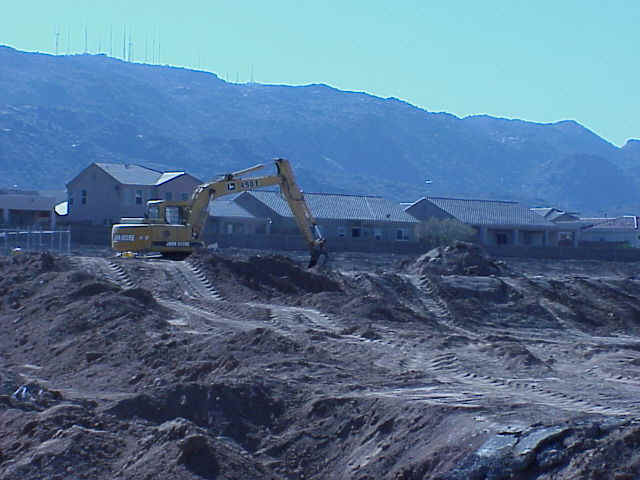
Tracking Controversies:
The Gentrification of South Phoenix
"This area's potential was apparent even then," said John Graham when interviewed by Catherine Reagor from The Arizona Republic in 1999. Mr. Graham is talking about the revitalization of South Phoenix and why he decided to build luxury homes in the area five years ago. Graham, like many other developers, believes that South Phoenix will be a "Mecca" for commuters who work downtown or in the South Mountain area. South Phoenix is just a short distance from downtown Phoenix, the Sky Harbor Airport, and Arizona Mills Mall. South Phoenix also has a beautiful view of South Mountain, Camelback Mountain, and Squaw Peak. The location and the view make South Phoenix a hot spot for development. The popularity of this area is illustrated in the sixteen different subdivisions that are supposed to be built from 27th Avenue to 56th Street between South Mountain and the riverbed, many of them now well underway.
The developers are interested in dollar signs, but what about the residents of South Phoenix? Many residents would agree with geographer N. Smith's assessment: "it appears that the needs of production - in particular the need to earn profit - are a more decisive initiative behind gentrification than consumer preference" (1996). I understand why some residents fear that South Phoenix is on its way to becoming Green Valley, the master-planned community that David Guterson wrote about in "No Place Like Home". I know that I personally wouldn't want to live in a community in which "everything is designed, orchestrated, and executed by a corporation". South Phoenix is famous for its individuality and diverse culture and for developers to build their uniform houses is a threat to this community's sense of originality.
Everyone in the valley knows South Phoenix has its share of problems; in fact this area is of "severe economic and social distress" . Nevertheless, according to the study by geographers Burns and Gober, homebuyers still feel that "it's safe here" (p.56). People actually believe that if the block walls are built tall enough and the guard is at the gated entrance then they will be safe and sound in their hundred and fifty thousand dollar homes. But as Neil Smith suggests, "Walls might separate paradise from heavy industry, but the protection they provide is an illusion" (p.62). Ultimately, the whole neighborhood will have to go through some sort of revitalization in order to truly create a safe environment for all its residents. However, with revitalization comes "upgrading" and I think that's what scares South Phoenix residents the most. Residents fear that their homes will be taken over by malls, gated communities, and freeways. To the working class gentrification is indeed considered "a dirty word", for they are the ones who will be uprooted by the "recycling" of their neighborhood (Smith, 1996).
I believe in revitalization of a neighborhood, I understand that some neighborhoods may need improvement, but the sensitivity of the residents needs to be kept in mind at all times. This is their home and their neighborhood and they shouldn't be driven out by a dollar sign.
For more information log onto: www.azcentral.com
